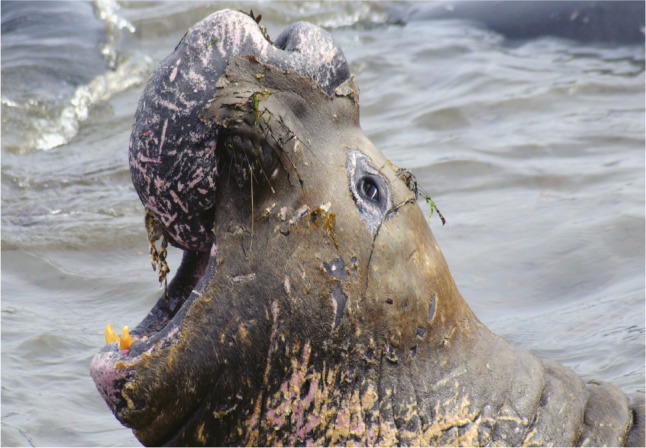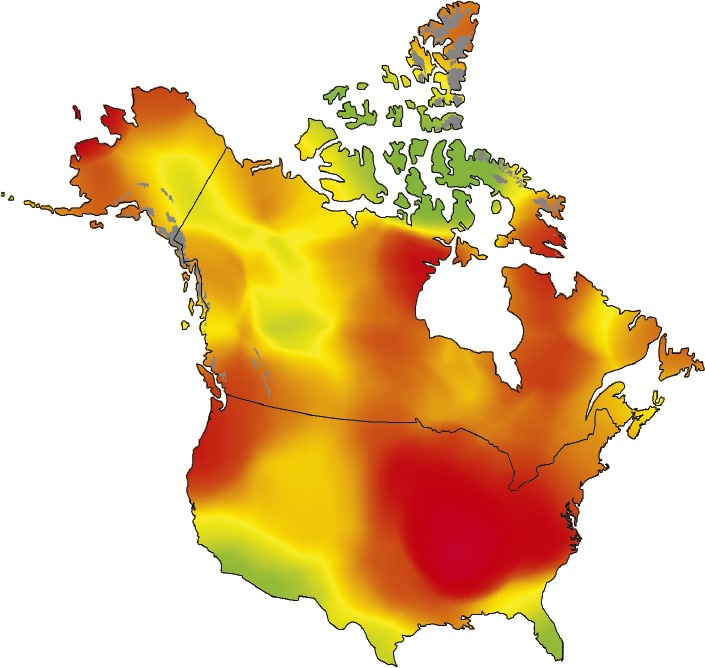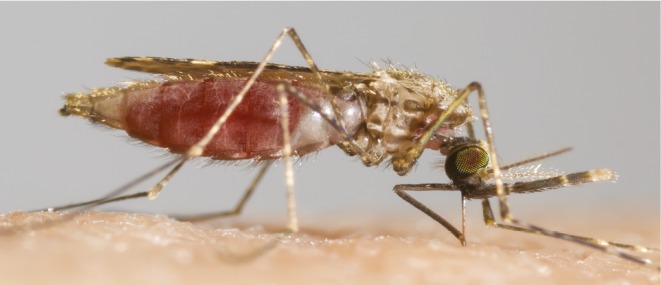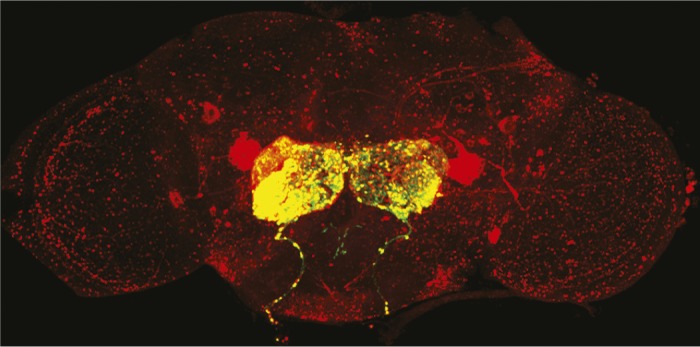Mercury and marine mammals

Northern elephant seals accumulate MeHg from their prey in the North Pacific. Image courtesy of James Harvey (Moss Landing Marine Laboratories, Moss Landing, CA).
Methylmercury (MeHg) is a neurotoxin that accumulates in marine food chains, posing a threat to environmental and human health. High Hg concentrations have been found in mussels found near large colonies of seals and sea lions, suggesting that the mammals might be a significant source of MeHg contamination. Jennifer Cossaboon et al. (pp. 12058–12062) compared MeHg concentrations in seawater near the northern elephant seal rookery at Año Nuevo State Reserve in California with MeHg concentrations found at other sites lacking large marine mammal populations. MeHg concentrations were significantly higher during both the breeding and molting seasons at Año Nuevo than at the other sites. MeHg concentrations were particularly high during the molting season, reaching as high as 9.5 pM, compared with an average of 0.3 pM at comparison sites. The finding suggests that seal molting contributes a significant amount of MeHg to seawater surrounding breeding colonies. Consistent with this view, the authors found significant Hg concentrations in molted seal hair. According to the authors, MeHg from seal hair might accumulate at the base of the coastal food chain and become magnified to toxic levels as the neurotoxin moves up the chain. According to the authors, large marine mammal assemblages might constitute a major source of environmental MeHg in nearshore ecosystems. — B.D.
Ancient North American populations

Population density estimates in North America between 500 and 1,000 years ago.
The spatial and temporal patterns of human demographics in North America since humans first colonized the continent have not been analyzed at the continental scale. Michelle Chaput et al. (pp. 12127–12132) estimated the distribution of humans in North America over the past 13,000 years using the frequency of radiocarbon dates in the Canadian Archaeological Radiocarbon Database (CARD) as an indicator of population density. The CARD contains more than 35,000 radiocarbon dates from archaeological sites throughout the United States and Canada, and the authors corrected for sampling biases and for the tendency of remains to deteriorate over time. The resulting population distribution for the period from 400 to 600 years ago corresponds to existing population estimates for the period just prior to European contact. Estimated population increases correspond to archaeologically established periods of settlement and migration, such as the migration into Alaska from Siberia around 4,500 years ago, the settlement of Labrador and Newfoundland 8,500 years ago, and the growth of Cahokia and environs in the eastern United States beginning 2,000 years ago. According to the authors, the results might help unravel humans’ historical impact on the North American ecosystem, as well as migration routes into and across the continent. — B.D.
Overcoming insecticide resistance among mosquitoes

Blood-feeding Anopheles gambiae s.s. mosquito, a major African malaria vector. Image courtesy of Hans Smid (Bugsinthepicture.com).
Resistance to conventional insecticides hampers the control of mosquito-borne diseases such as malaria, dengue, and West Nile virus. Rob Andriessen et al. (pp. 12081–12086) developed a method to disrupt insecticide resistance using netting with an electrostatic coating, originally developed for trapping airborne pollen, onto which insecticides are applied. The charged surface binds insecticide particles more effectively than an untreated surface, thereby increasing the amount of insecticide transferred to mosquitoes that land on the surface. The authors observed significantly higher mortality rates among insecticide-resistant mosquito strains exposed to insecticide on electrostatic netting, compared with exposure to commercially available insecticidal netting. For certain insecticide-resistant strains, the electrostatic netting killed 100% of mosquitoes while the conventional netting killed less than 10% of mosquitoes. Electrostatic netting induced significantly higher mortality rates than conventional netting even with exposure times as short as 5 seconds, or when treated with a 15-fold lower insecticide dosage, compared with conventional netting. The electrostatic coating improved the effectiveness of multiple classes of insecticides, demonstrating the coating’s general applicability. The combination of electrostatic coating and insecticide could greatly improve control of mosquito-borne diseases, according to the authors. — B.D.
Protein aggregates in Huntington’s disease

Transneuronal spreading of huntingtin aggregates.
Huntington’s disease and other neurodegenerative illnesses are thought to progress via the production, aggregation, and cell-to-cell spread of misfolded proteins. The mechanism of the spread, however, remains unclear. Daniel Babcock and Barry Ganetzky (pp. E5427–E5433) examined the spread of pathogenic aggregates in a Drosophila model of Huntington’s disease. Drosophila has been used to model a number of neurodegenerative diseases and allows researchers to simultaneously study multiple neuron populations using binary expression systems from yeast and bacteria. The authors fluorescently labeled a mutant version of the human huntingtin (Htt) protein and visualized the spread of Htt aggregates in the Drosophila brain. When mutant Htt is expressed in olfactory receptor neurons, the authors report, aggregates of Htt accumulate at synaptic terminals—bulbs at the ends of neurons that store neurotransmitters and coordinate their release—and spread from the antennal lobe to other areas of the brain. The spread contributes to the deterioration of vulnerable neurons, a process that can be prevented by blocking the release of Htt aggregates or their uptake by other neurons. According to the authors, clear understanding of aggregate development and spread could aid in the discovery of genetic or pharmacological interventions for neurodegenerative illnesses. — A.G.
Ancient flour production

Swollen, gelatinized starch grain from Paglicci grinding stone.
Recent interest in ancient diets has led to the collection of extensive data about the variety of plants eaten by early humans and ancient food processing capabilities. Marta Mariotti Lippi et al. (pp. 12075–12080) analyzed residues from an ancient grinding tool to gain further insight into food processing practices of the Early Gravettian culture of ancient Europe. The tool was found in Grotta Paglicci in southern Italy in 1989 and dates to more than 32,000 years ago. Residue samples from the tool contained a variety of starch grains, and the distribution of the starch grains on the tool surface suggested that the tool may have been used for grinding grain into flour. The presence of swollen, gelatinized starch grains in the residues suggests that the plants were thermally treated before grinding. Such treatment might have been necessary to accelerate plant drying during the Middle-Upper Paleolithic, when the climate was colder than at present. The most common starch grains in the residues appeared to come from oats, representing the oldest evidence to date of the processing of oats for human consumption. According to the authors, the findings suggest that the inhabitants of Grotta Paglicci may have been the earliest people to use a multistep process in preparing plants for consumption. — B.D.
Kinase inhibitors for non-small cell lung cancer
Malignant transformation is commonly driven by the unchecked expression of oncogenic fusion proteins. Approximately 5% of patients with non-small cell lung cancer (NSCLC), for example, have chromosomal rearrangements in the receptor tyrosine kinase anaplastic lymphoma kinase (ALK) and the related kinase ROS1. Several patients with NSCLC have benefited from treatment with crizotinib, a kinase inhibitor, but the drug’s efficacy is limited by resistance mutations. Monika Davare et al. (pp. E5381–E5390) profiled the sensitivity and selectivity of seven clinically viable ROS1/ALK inhibitors to identify FDA-approved compounds capable of inhibiting the growth of cells expressing native ROS1 or crizotinib-resistant kinase mutants. The authors also compared the structures of the ROS1 and ALK kinase domains and modeled the binding of tyrosine kinase inhibitors to native and mutant kinase domains. The findings show that the inhibitor cabozantinib potently inhibits both native ROS1 and the crizotinib-resistant ROS1 mutant, and suggest that the drug might be repurposed as a potential treatment for ROS1-related lung cancer. Cabozantinib does not bind to the closely related ALK kinase due to structural differences in the ALK and ROS1 kinase domains. According to the authors, the study reveals that ROS1 and ALK inhibitors may not be mutually selective and provides information needed to drive rational drug design for NSCLC and other malignancies. — A.G.


